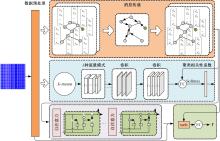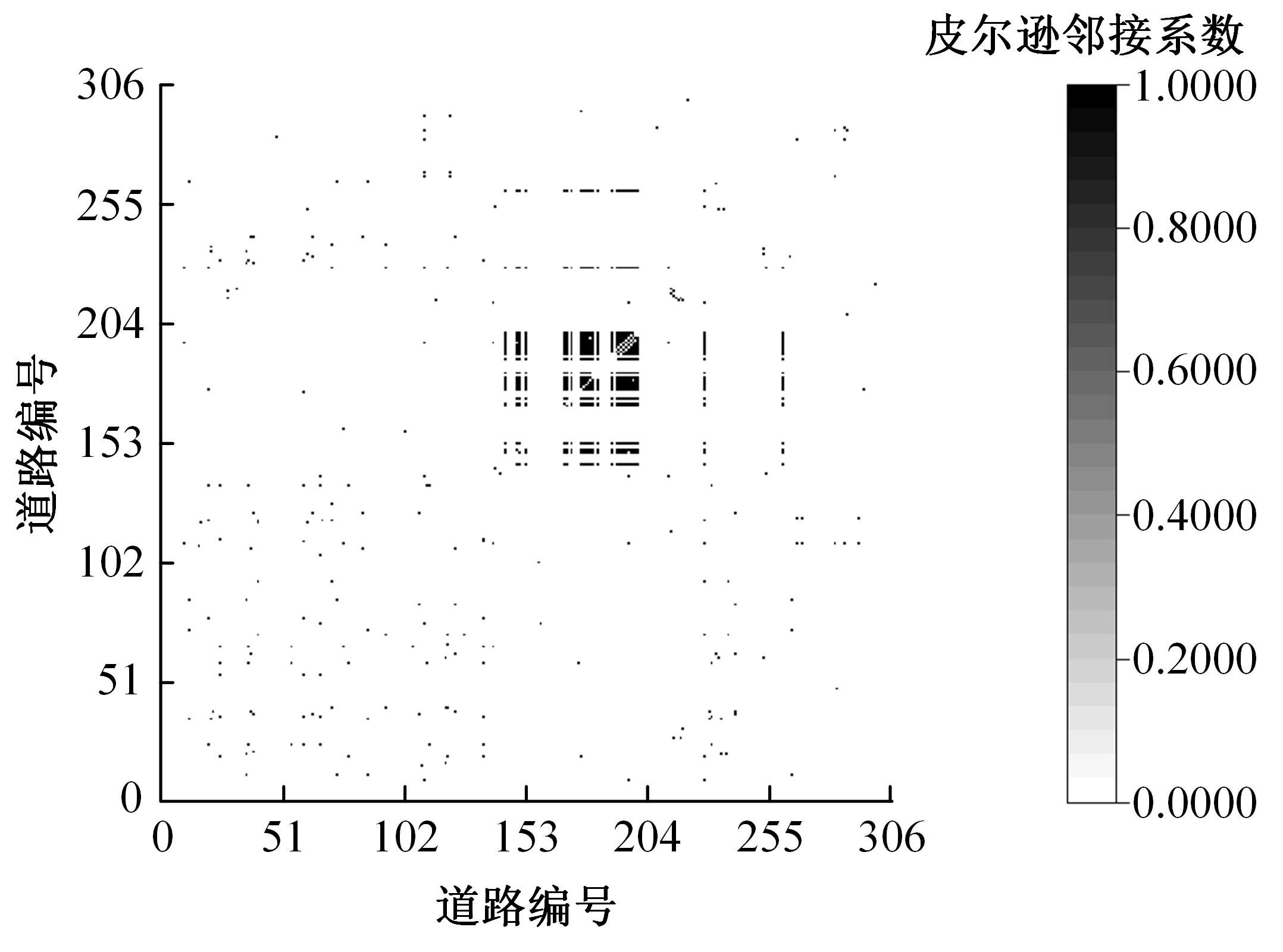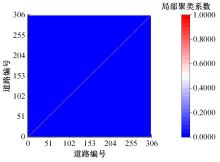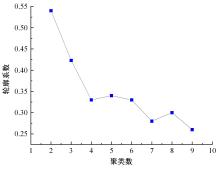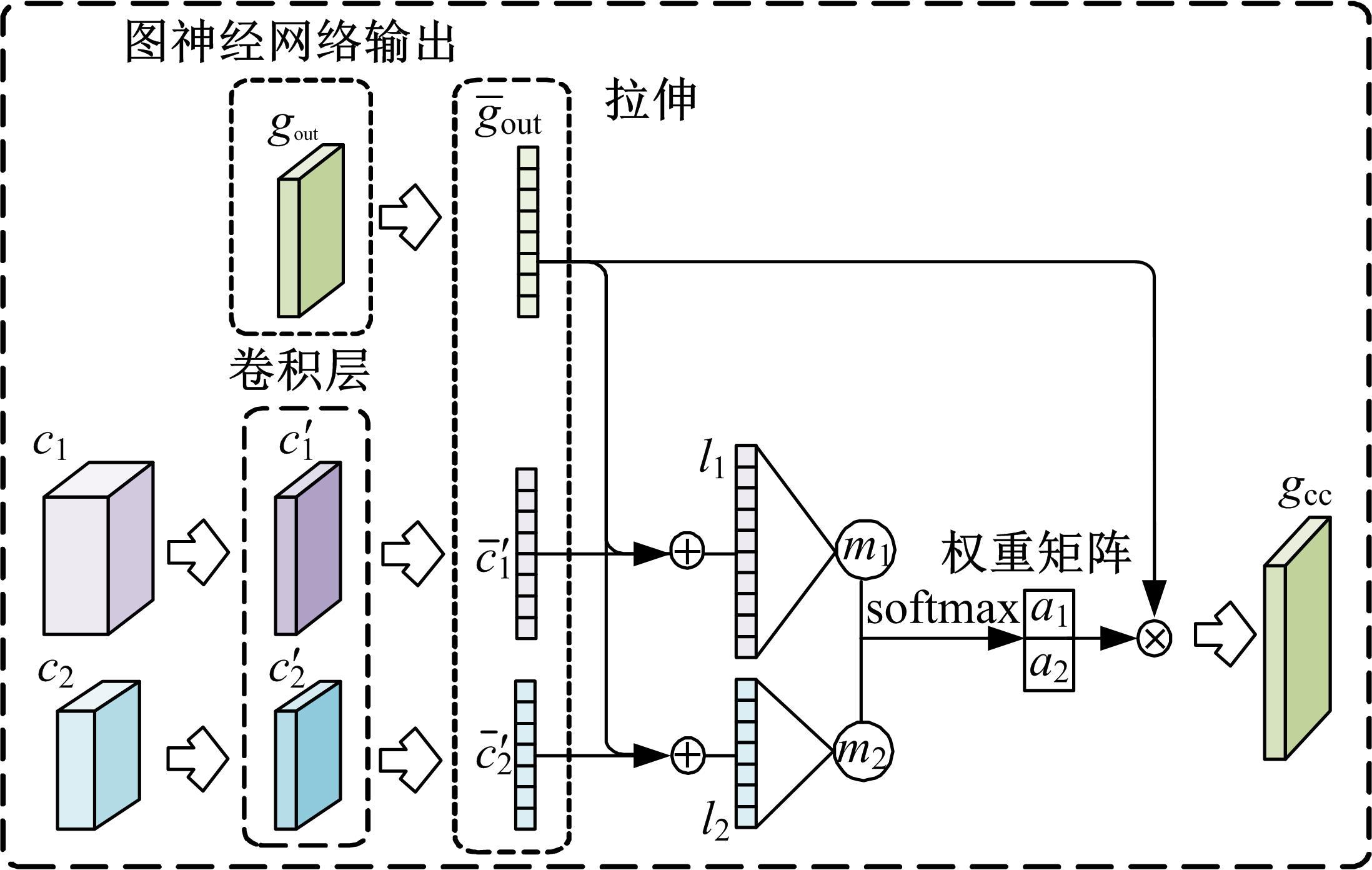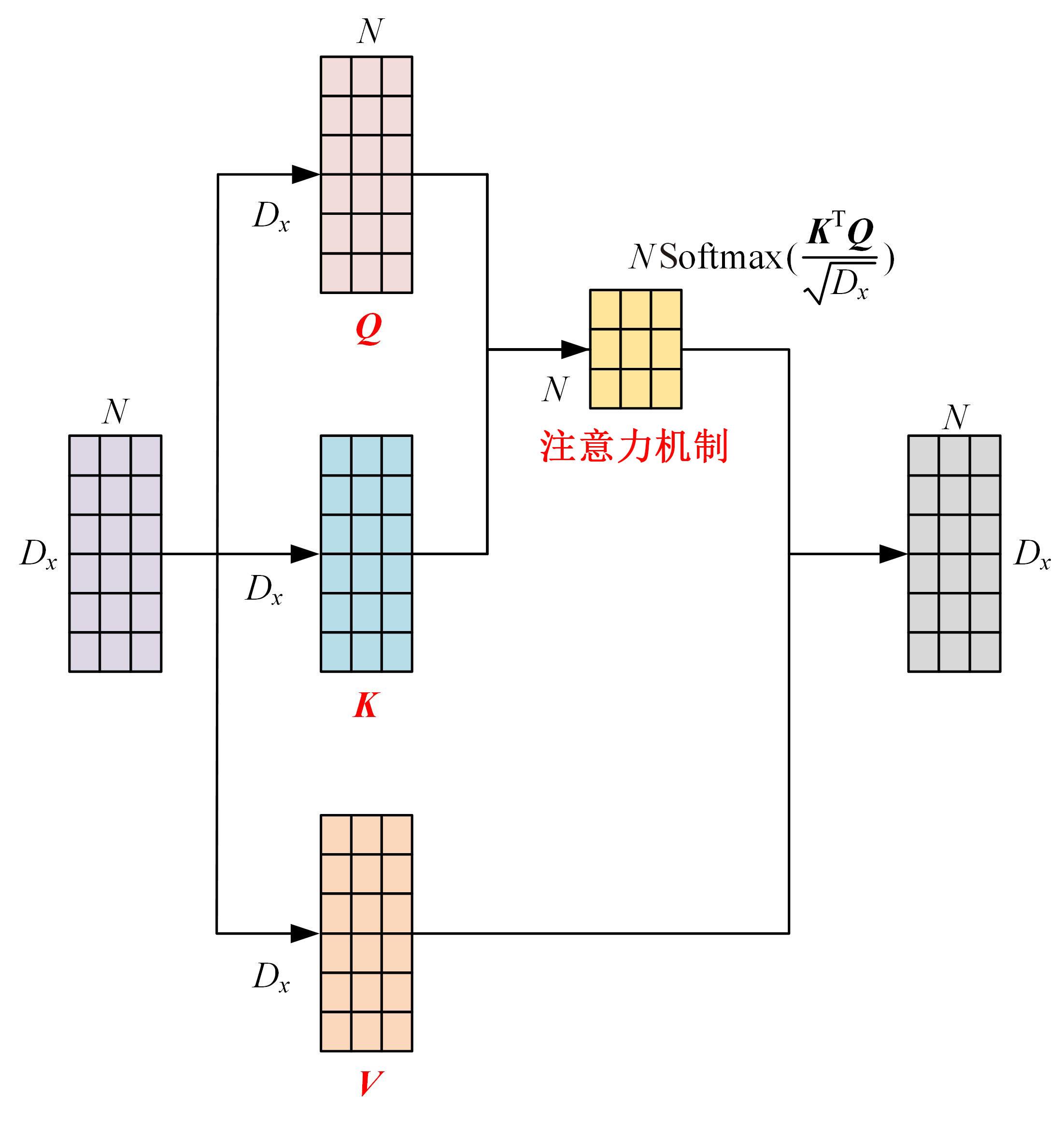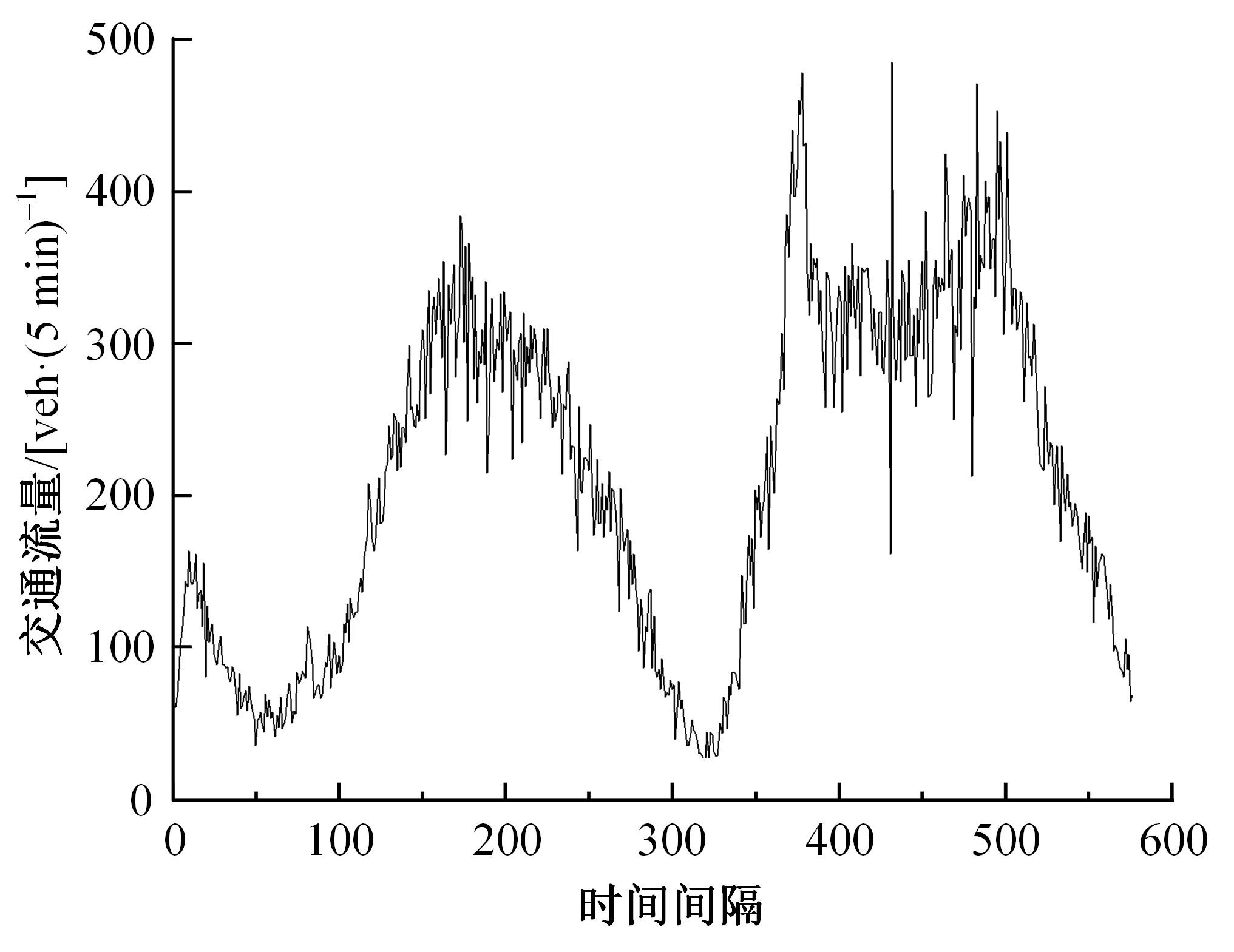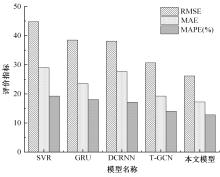吉林大学学报(工学版) ›› 2024, Vol. 54 ›› Issue (6): 1593-1600.doi: 10.13229/j.cnki.jdxbgxb.20220950
• 交通运输工程·土木工程 • 上一篇
基于聚类算法和图神经网络的短时交通流预测
- 兰州理工大学 计算机与通信学院,兰州 730050
Short-term traffic flow prediction based on clustering algorithm and graph neural network
Xi-jun ZHANG( ),Guang-jie YU,Yong CUI,Ji-yang SHANG
),Guang-jie YU,Yong CUI,Ji-yang SHANG
- School of Computer and Communication,Lanzhou University of Technology,Lanzhou 730050,China
摘要:
针对现有预测模型未充分利用交通流数据时空相关性的问题,本文提出了一种深度学习模型,将聚类算法、图神经网络(GNN)和门控循环单元(GRU)相结合。首先,利用聚类算法将预处理后的数据划分为不同类型的流量模式;其次,采用GNN提取复杂路网交通流的空间相关性,结合道路的皮尔逊相关性分析和节点的局部聚类系数,挖掘潜在的节点连接关系;再次,使用GRU提取交通流数据之间的时间相关性,通过自注意力机制捕获数据之间的相互依赖关系;最后,通过残差连接将GRU和GNN的输出与原始输入结合,经过全连接层得出最终的预测结果。多组实验结果证明,本文提出的模型预测精度优于其他基线模型及对比的模型。
中图分类号:
- TP183
| 1 | 全国机动车保有量突破 4亿辆一季度新注册登记新能源汽车同比增加138.20%[EB/OL]. [2022-07-10]. |
| 2 | 方华伟. 智能交通系统的现状与展望[J]. 电子技术,2022, 51(3): 196-197. |
| Fang Hua-wei. Status and prospect of intelligent transportation system[J]. 2022, 51(3): 196-197. | |
| 3 | 刘静, 关伟. 交通流预测方法综述[J]. 公路交通科技, 2004, 21(3): 82-85. |
| Liu Jing, Guan Wei. A summary of traffic flow forecasting methods[J]. Journal of Highway and Transportation Research and Development, 2004, 21(3):82-85. | |
| 4 | 刘学刚, 张腾飞, 韩印.基于ARIMA模型的短时交通流预测研究[J]. 物流科技, 2019, 42(12): 91-94, 102. |
| Liu Xue-gang, Zhang Teng-fei, Han Yin. Research on short-term traffic flow forecast based on ARIMA model[J]. Logistics Sci-Tech, 2019, 42(12): 91-94, 102. | |
| 5 | 周晓, 唐宇舟, 刘强. 基于卡尔曼滤波的道路平均速度预测模型研究[J]. 浙江工业大学学报, 2020, 48(4): 392-396. |
| Zhou Xiao, Tang Yu-zhou, Liu Qiang. Research on road average speed prediction model based on Kalman filter[J]. Journal of Zhejiang University of Technology, 2020, 48(4): 392-396. | |
| 6 | Liu S Y, Liu S, Tian Y, et al. Research on forecast of rail traffic flow based on ARIMA model[J]. Journal of Physics: Conference Series, 2021, 1792(1): No.012065. |
| 7 | 陈雪平, 曾盛, 胡刚. 基于BP神经网络的短时交通流预测[J].公路交通技术, 2008(3):115-117. |
| Chen Xue-ping, Zeng Sheng, Hu Gang. Short-time traffic flow prediction based on BP neural network[J]. Technology of Highway and Transport, 2008(3):115-117. | |
| 8 | 宋伟, 张杨. 依赖神经网络的交通流量预测[J]. 国外电子测量技术, 2019, 38(12): 27-31. |
| Song Wei, Zhang Yang. Prediction of traffic flow based on neural network[J]. Foreign Electronic Measurement Technology, 2019, 38(12): 27-31. | |
| 9 | Huang X H, Ye Y M, Wang C, et al. A multi-mode traffic flow prediction method with clustering based attention convolution lstm[J]. Applied Intelligence, 2022, 52(13): 14773-14786. |
| 10 | 谷振宇, 陈聪, 郑家佳, 等. 基于时空图卷积循环神经网络的交通流预测[J]. 控制与决策, 2022, 37(3):645-653. |
| Gu Zhen-yu, Chen Cong, Zheng Jia-jia, et al. Tranffic flow prediction based on STG-CRNN[J].Control and Decision,2022, 37(3): 645-653. | |
| 11 | Bai J D, Zhu J W, Song Y J, et al. A3t-GCN: attention temporal graph convolutional network for traffic forecasting[J]. ISPRS International Journal of Geo-Information, 2021, 10(7): 485-485. |
| 12 | 黄伟坚, 李春贵. 基于时空注意力图卷积神经网络的交通速度预测[J]. 广西科技大学学报, 2022, 33(1): 54-62. |
| Huang Wei-jian, Li Chun-gui. Attention-based spatio-temporal graph convolutional neural network for traffic speed prediction[J]. Journal of Guangxi University of Science and Technology, 2022, 33(1): 54-62. | |
| 13 | Yadav R K, Abhishek A, Sourav S, et al. GCN with clustering coefficients and attention module[C]∥2020 19th IEEE International Conference on Machine Learning and Applications (ICMLA), Miami,USA, 2020: 185-190. |
| 14 | Zhao L, Song Y J, Zhang C, et al. T-GCN: a temporal graph convolutional network for traffic prediction[J]. IEEE Transactions on Intelligent Transportation Systems, 2019, 21(9): 3848-3858. |
| [1] | 井佩光,田雨豆,汪少初,李云,苏育挺. 基于动态扩散图卷积的交通流量预测算法[J]. 吉林大学学报(工学版), 2024, 54(6): 1582-1592. |
| [2] | 刘状壮,郑文清,郑健,李轶峥,季鹏宇,沙爱民. 基于网格化的路表温度感知技术[J]. 吉林大学学报(工学版), 2023, 53(6): 1746-1755. |
| [3] | 田彦涛,黄兴,卢辉遒,王凯歌,许富强. 基于注意力与深度交互的周车多模态行为轨迹预测[J]. 吉林大学学报(工学版), 2023, 53(5): 1474-1480. |
| [4] | 康耀龙,冯丽露,张景安,曹素娥. 基于谱聚类的不确定数据集中快速离群点挖掘算法[J]. 吉林大学学报(工学版), 2023, 53(4): 1181-1186. |
| [5] | 张惠臻,高正凯,李建强,王晨曦,潘玉彪,王成,王靖. 基于循环神经网络的城市轨道交通短时客流预测[J]. 吉林大学学报(工学版), 2023, 53(2): 430-438. |
| [6] | 高海龙,徐一博,侯德藻,王雪松. 基于深度异步残差网络的路网短时交通流预测算法[J]. 吉林大学学报(工学版), 2023, 53(12): 3458-3464. |
| [7] | 王四宝,郭忠政,马驰,王时龙. 数控滚齿机工作台热-力变形分析及预测建模[J]. 吉林大学学报(工学版), 2023, 53(10): 2761-2772. |
| [8] | 毛伊敏,顾森晴. 基于MapReduce与优化布谷鸟算法的并行密度聚类算法[J]. 吉林大学学报(工学版), 2023, 53(10): 2909-2916. |
| [9] | 董立岩,梁伟业,王越群,李永丽. 基于会话的结合全局潜在信息的图神经网络推荐模型[J]. 吉林大学学报(工学版), 2023, 53(10): 2964-2972. |
| [10] | 康耀龙,冯丽露,张景安,陈富. 基于谱聚类的高维类别属性数据流离群点挖掘算法[J]. 吉林大学学报(工学版), 2022, 52(6): 1422-1427. |
| [11] | 张龙,徐天鹏,王朝兵,易剑昱,甄灿壮. 基于卷积门控循环网络的齿轮箱故障诊断[J]. 吉林大学学报(工学版), 2022, 52(2): 368-376. |
| [12] | 张萌谡,刘春天,李希今,黄永平. 基于K⁃means聚类算法的绩效考核模糊综合评价系统设计[J]. 吉林大学学报(工学版), 2021, 51(5): 1851-1856. |
| [13] | 钱榕,张茹,张克君,金鑫,葛诗靓,江晟. 融合全局和局部特征的胶囊图神经网络[J]. 吉林大学学报(工学版), 2021, 51(3): 1048-1054. |
| [14] | 魏晓辉,孙冰怡,崔佳旭. 基于图神经网络的兴趣活动推荐算法[J]. 吉林大学学报(工学版), 2021, 51(1): 278-284. |
| [15] | 谷远利, 张源, 芮小平, 陆文琦, 李萌, 王硕. 基于免疫算法优化LSSVM的短时交通流预测[J]. 吉林大学学报(工学版), 2019, 49(6): 1852-1857. |
|
||
